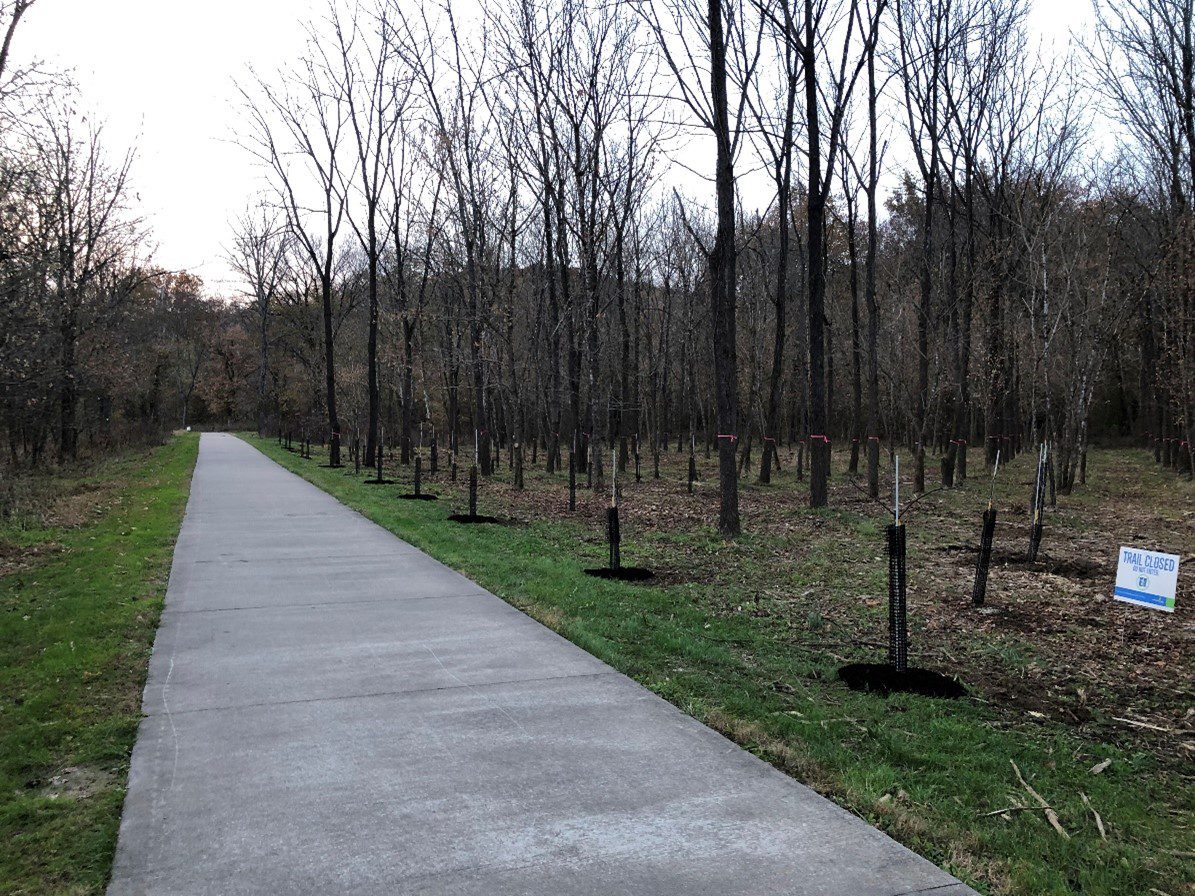
Walnut Grove Restoration Project
The Strand
In spring of 2020, an effort to re-establish the Walnut Grove at The Parklands of Floyds Fork began to take shape. This special piece of land located within The Strand portion of The Parklands was once an almost pure stand of black walnut (Juglans nigra) with random pecan trees (Carya illinoinensis). The grove was planted more than 30 years ago by Sherman Cornell, the land’s former owner who sold his tract to 21st Century Parks in 2010. The Walnut Grove lies within the floodplain of our namesake Floyds Fork stream, and as such, riparian species such as boxelder (Acer negundo), sycamore (Platanus occidentalis) and ash (Fraxinus pennsylvanica) grow rapidly in favorable conditions.
The space has been preserved by The Parklands since it was obtained for the project, and in 2020, the team met to discuss how to activate the grove, turning it into a destination within The Parklands that would attract visitors to this special place within the Strand. Attractions such as the gravel bar, fishing spots and wading areas along Floyds Fork already bring visitors to the area, as well as new attractions like the Avenue of the Oaks. The Strand Trailhead, which opened to the public in 2019, provides enhanced accessibility for these special places.
In 2020, the Walnut Grove Restoration project was established to further strengthen the draw to the Strand, creating a vision statement based off four key principles:
- Restoration of the formal “grove” concept
- Connection to the Fork
- Enhance the Aesthetic of the Area
- Long term Sustainability of the Area
A multi-year plan to meet these objectives formalized in the fall of 2020 and work began to prepare the area for the project. This consisted of a comprehensive review and inventory of desired plant species as well as undesirable plant species that may be invasive, have significant pest issues or be deceased/dying.
Next, The Parklands Horticulture and Natural Areas team began removing hazardous trees and invasive species from the grove. Most of the trees removed consisted of ash trees—dead or in poor health due to the Emerald Ash Borer—and box elder in poor health or encroaching on a walnut tree. While the survey gave a good idea of the number of trees needed, it became readily apparent that The Parklands would need more black walnut trees than what may be available in the area. This was especially true in that we wanted to source our walnut trees from locally collected walnut seed stock. This ensures any newly planted trees would be from local biotypes and much more adapted to our environment and conditions.
Very few vendors grow trees from seed and fewer grow black walnut. We identified Woody Warehouse in Lizton, Indiana, having worked with them on various projects in the past. They are experts at harvesting seed locally to grow trees best suited for the area.
The estimated amount of black walnut trees needed to restore the grove outnumbered the amount of trees Woody Warehouse could provide, so we implemented four strategies to deal with the shortage. First, we decided to prioritize the connection of the grove to the Louisville Loop and the grove to Floyds Fork. We want visitors who traverse these frequently used pathways to experience the grove, enjoying the new walnut trees. Second, we ordered ten pecan trees to supplement the walnut much as Cornell did when he established the area. Third, we selected some of the healthiest riparian species to leave standing within the rows to fill gaps. Last, we bought every viable tree Woody Warehouse would sell and submitted an order to acquire additional walnuts in 2022. This amounted to 176 total trees with 166 being black walnut and 10 northern pecan.
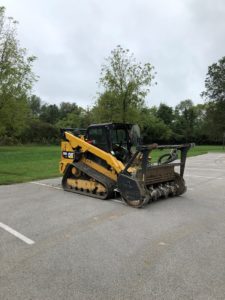
Forest Mulcher
The Parklands team rented a “forestry mulcher” for a week to do much of the clearing after identifying all desirable trees. This machine can remove up to 10” diameter trees and turn them as well as any underbrush into shredded mulch. This allowed for heavy thinning of dead and undesirable trees on site critical to project completion.
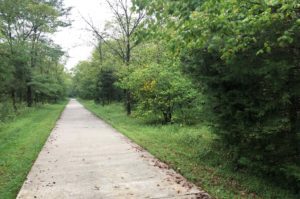
Walnut Grove Before
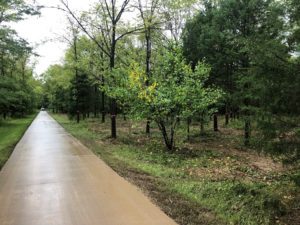
Walnut Grove After
In November of 2021, with the grove prepped and trees in stock, my staff along with help from Bowling Nursery began planting trees. We take great pride in planting trees correctly by placing them at the proper depth with no foreign materials such as wire baskets or burlap left in the planting hole. Stakes installed on each tree also served as a way to secure deer protection fencing, which is critical to protect the young trees from deer browse. The day was very long but the combined team of contractors and Parklands staff finished planting and staking all 176 trees in one day. Over the next year, our focus will be managing the newly planted trees much of which will consist of watering.
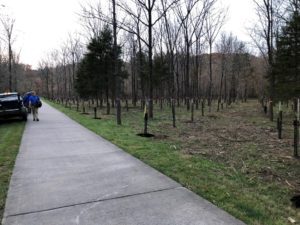
Walnut Grove 2021 Tree Planting
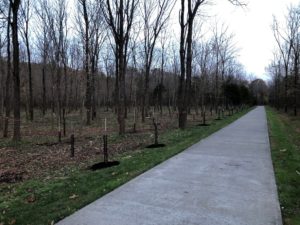
Walnut Grove 2021 Tree Planting
A special thanks to LG&E and KU Energy and UPS who were sponsors of the Walnut Grove planting in the Fall of 2021. Keep an eye on this special place within the Strand evolves as the new trees grow and more are planted in 2022.
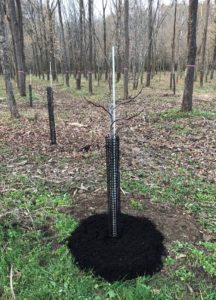
Walnut Tree
